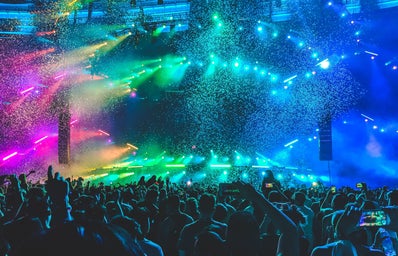Spoilers ahead: Read with caution!
Some of the topics discussed in the article contain sensitive or triggering topics, including gun violence and mental health concerns. Discretion is advised.
On April 3rd, Warner Brothers released the teaser trailer for Joker, starring Joaquin Phoenix. When filmmakers produce these trailers, they must show footage from the film without providing too much indication of the movie’s plot but also must ensure they are evoking audience interest in the film. The trailer was so riveting and captivating. With Jimmy Durante’s version of “Smile” playing over the chilling footage of men mocking Joker for his uncontrollable laughter and striking him in the face, the trailer may not have shown much of the plot but definitely gave the audience a preview of its message about the struggles of individuals with mental health concerns. In the YouTube comments, users considered the trailer “a work of art” and expressed their anticipation for Joaquin Phoenix’s interpretation of the character. Joker tells the story of how Arthur Fleck fails at his stand-up comedy career and becomes the famous villain. The movie debuted in theaters all across the country on October 4th.
As the release date for the film got closer, the movie sparked some controversy among potential moviegoers. First, many expressed concerns that the film would inspire people to partake in gun violence or other forms of violent behavior. Most of these concerns stemmed from the film’s association with the 2012 movie theater shooting that occurred in Aurora, Colorado where James E. Holmes shot into the audience during a screening of the second film from Christopher Nolan’s Batman trilogy, The Dark Knight Rises. Reports claimed that Holmes donned himself as the Joker. Major movie theater chains and federal authorities went on high alert to ensure such a tragedy would not occur again. Some theaters banned its moviegoers from wearing any masks, costumes, or bringing toy guns to make sure other guests did not feel uncomfortable. Some theaters, including the movie theater in Aurora, decided to ban screening the film itself.
On September 23rd, loved ones of the victims of the Aurora mass shooting wrote a letter to the Warner Brothers chief executive stating that they were appalled by the decision to center a film around a person wronged by society who ultimately committed violent acts and portray that character in a sympathetic light. Others expressed that the film is glorifying violence or legitimizing the violence because the perpetrator has a mental illness. As a result, in the midst of an already extensive debate about gun violence in America, there have been debates on whether violence showcased in the media incites violent actions.
Image via Specna Arms on Pexels
On the other hand, while others expressed their concerns about the movie’s potential for “inspiring senseless acts of violence,” some moviegoers believed the film demonstrated a powerful message about class differences and the treatment of those with mental health concerns. After reading a couple of Facebook posts about the film, I found one to be the most compelling and representative of the positive comments about Joker’s underlying message. The post talked about the stigma surrounding those with mental health concerns. Part of the problem is their portrayal in the media, which creates the faulty impression that they are more prone to violence. Also, the problem is rooted in society’s lack of understanding of their concerns and struggles. In the 1970s, the federal government decided to downsize psychiatric hospitals throughout the country and instead use community-based treatment centers. Unfortunately, due to “not-in-my-backyard” attitudes from community residents, only a few of these proposed centers were built, leading to long queues at those mental health centers that were established and even the refusal of services to individuals when the lines grew too long. Those with severe mental health concerns who had been discharged at these state psychiatric hospitals did not have anywhere else to go. While they had their families, loved ones simply lacked the knowledge and the means in which to care for them. In turn, some flocked to the streets, turned to substances that only exacerbated their symptoms, or even turned to crime. Upon further investigation, law enforcement has been forced to take up the mantle as “de facto mental health care providers” and prisons now house the largest mental health care centers. Image via Sarah Pflug on Burst
While mental health concerns are indeed rooted in either an imbalance of neurotransmitters in a person’s brain or some other neurobiological reason, they are further exacerbated when left untreated due to neglect and a lack of access to mental health treatment. Instead of trying to spark the message that violence is justified, the film is trying to say that the system fails people. In Joker, the system failed Arthur. Budget cuts to social services left him without medication for his symptoms. Along with the constant torment from those mocking his stand-up show and the bullies from Thomas Wayne’s enterprise, he spirals out of control and becomes Joker. The Facebook user demonstrated that his interpretation of the movie was that “monsters are not born–they are made.”
Something we can all take away from the discussion of this controversy is that the messages in these films can be interpreted in different ways. Some interpreted the film as problematic, others as a masterpiece with a sad but very honest message about the treatment of the mentally ill in society. This film polarized viewers and critics and sparked debates between mental health practitioners. In times of great polarization, it brings me comfort that people are able to express their opinions and concerns of the film and have them be heard without any form of retribution. Rather than attack each other on our own interpretations and views about the film, I believe we should all recognize and respect each other’s opinions. We do not necessarily have to agree on everything, but we should acknowledge one another’s views.
Image via Pixabay on Pexels



